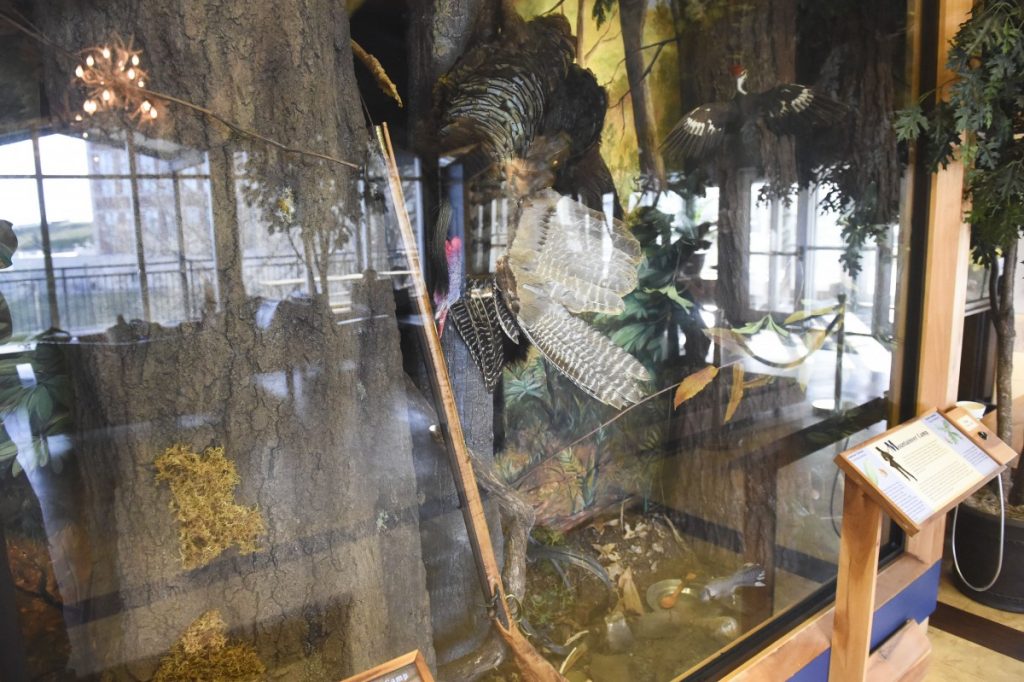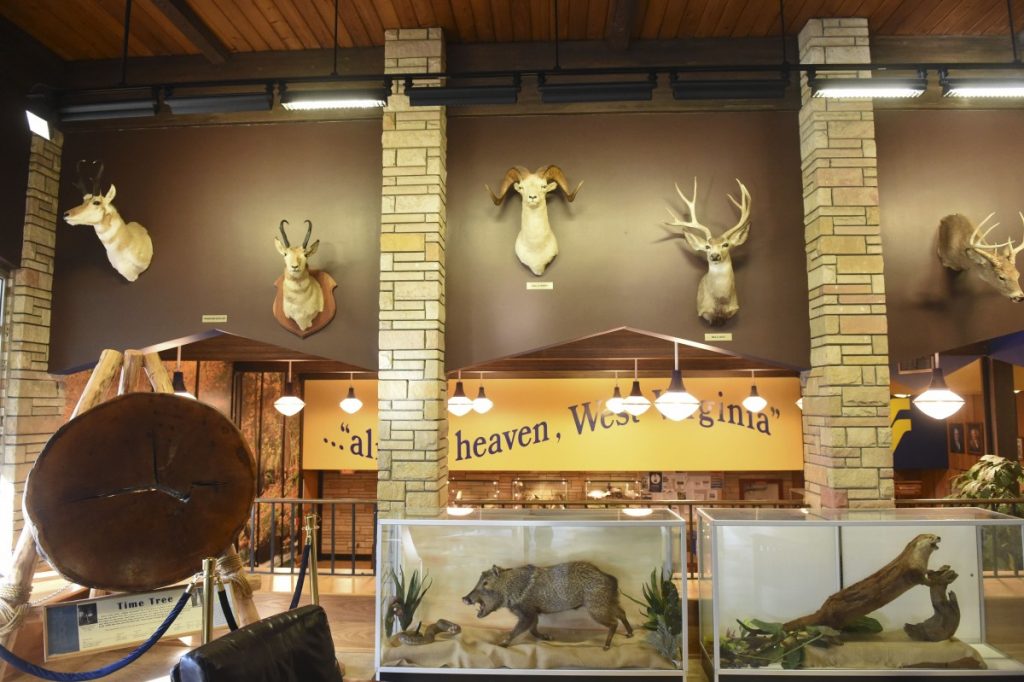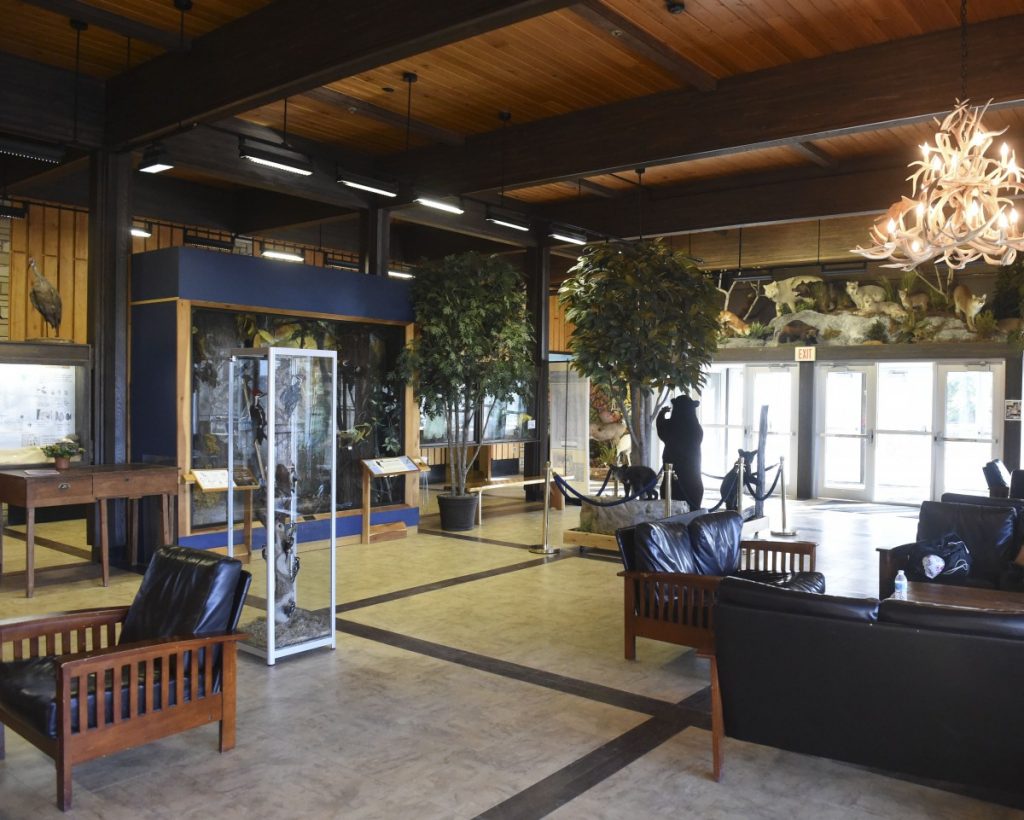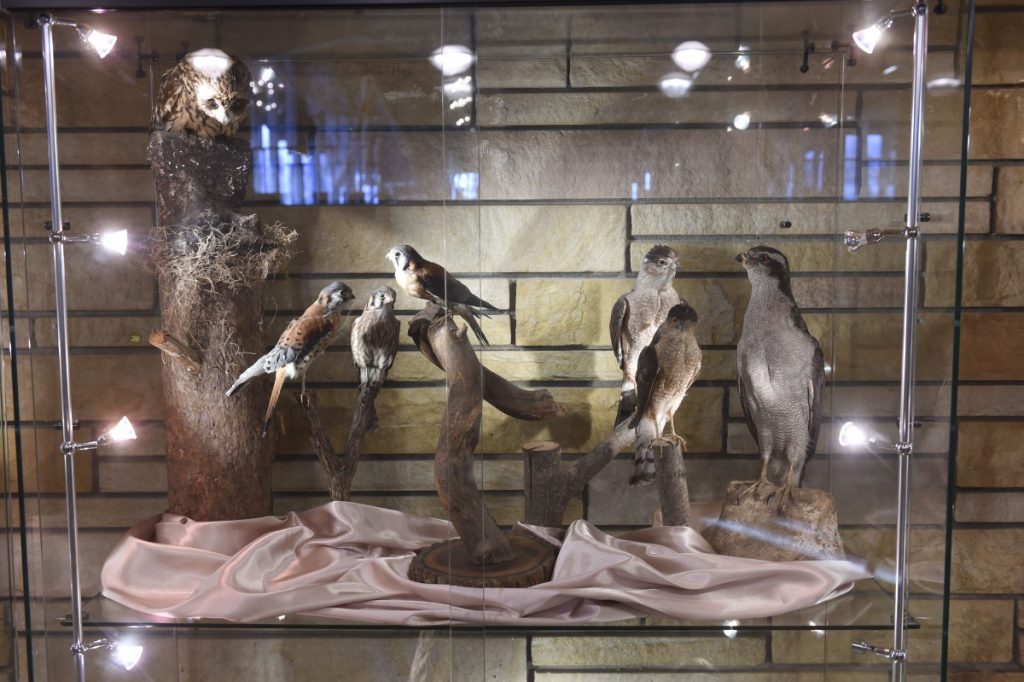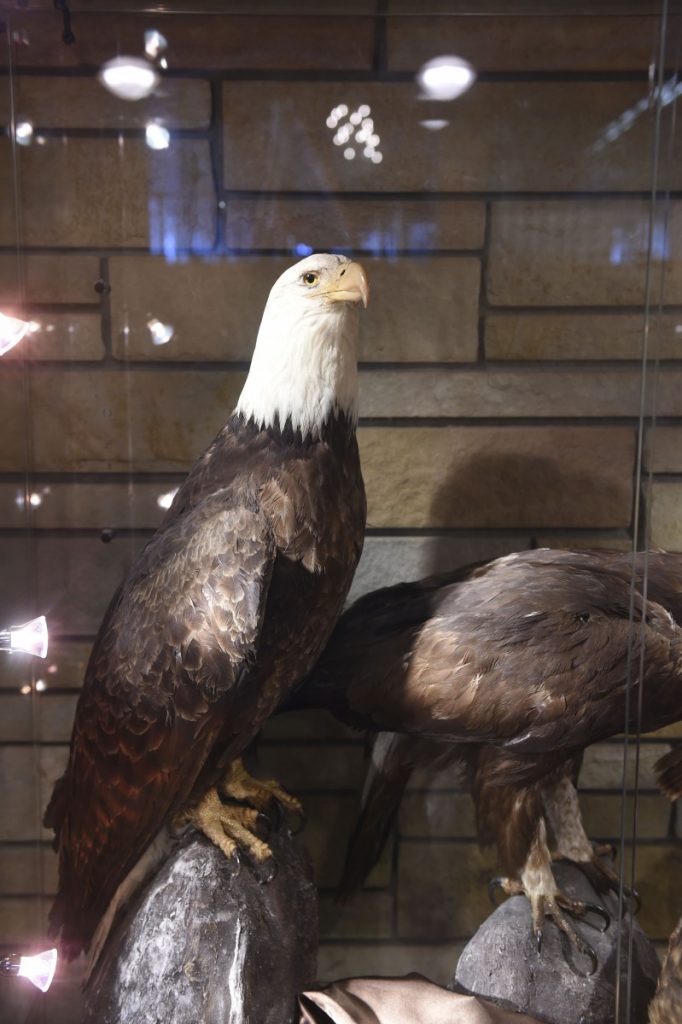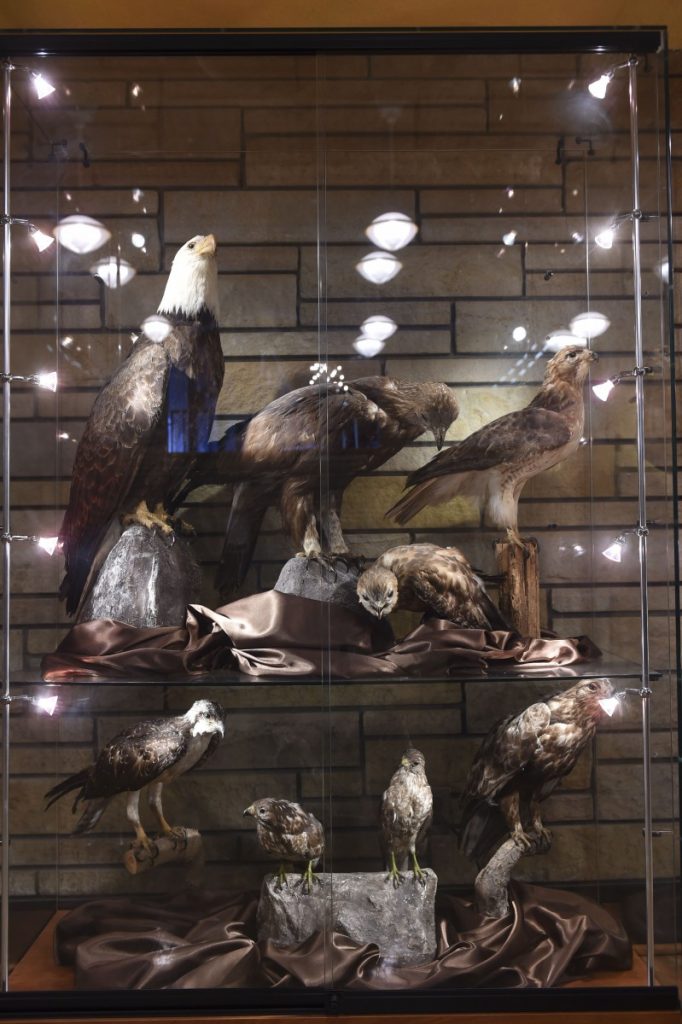MORGANTOWN — Within the walls of Percival Hall, on the Evansdale Campus, the WVU Natural History Museum lives.
With Percival Hall housing the wildlife and fisheries program at WVU, the museum is a perfect fit for students to examine and take in while waiting for classes to begin.
The WVUNHM came to life just more than 10 years ago as a result of professors within the Division of Forestry and Natural Resources searching for better teaching tools for students. A lack of taxidermy specimens became the main problem that needed a solution. With generous donations made by Robert and Mary Lou Estler, more than
400 taxidermy mounts became housed within the Davis College of Agriculture, Natural Resources and Design. This donation sparked the creation of the WVUNHM, including animals of almost every type found in North America from wolves, hawks, owls to insects, eggs and waterfowl.
Many parts of the museum are made possible by local artisans collaborating. A highlighted area of the museum is the Mountaineer/trapper exhibit that showcases a flint rifle made and fired by Marvin Wotring, who is the maker of the WVU mascot rifles. Some more examples of work created by local artisans include a four-species antler chandler created by Rick Snyder of Kingwood, and West Virginia mountain murals painted by WVU student Isabella Cortes Lara.
Ann Anderson, the forerunner in the museum design and preparation, assisted with curating, planning and co-directing the WVUNHM. Anderson is passionate about encouraging students and professors to use the amount of art at their fingertips. She believes the museum provides an opportunity for a teaching and learning experience for students learning exhibit building or students who want to connect to the natural world in an up-close environment.
“It builds a bridge between public, future students, and professionals on a college campus,” Anderson said. “It emphasizes the immediate connection to the land or nature and its fauna that would perhaps may not be obtainable for most people.”
Jim Anderson, a professor of wildlife and fisheries resources believes the museum is crucial for a school like WVU.
“Natural History Museums are an essential component of a comprehensive land grant institution,” Anderson said, “…particularly in a rural state like West Virginia where people embrace a strong connection with the land.”
Percival Hall is open weekdays until 10 p.m. Saturday hours are in the works. Parking is available in lot ST6 for a per hour fee. After 6 p.m. parking is free in the lower lot immediately adjoining Per-cival Hall.
Tours for groups are available upon request. Jim Anderson can be contacted at jim.anderson@mail.wvu.edu or 304-276-8956. To learn more about the museum, visit http://wvnaturalhistory. wvu.edu/.
Follow The Dominion Post on Twitter @DominionPostWV. Email: newsroom@dominionpost.com.



